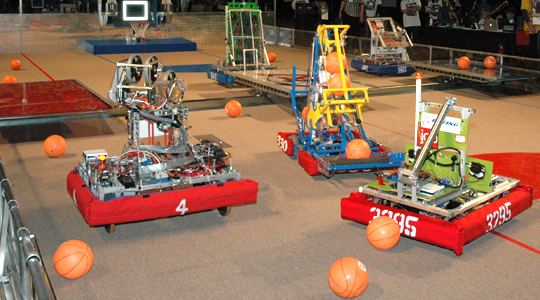 | ||
A robotic competition is an event where robots have to accomplish a task. Usually they have to beat other robots in order to become the best one.
Contents
- Roborace
- DARPA Grand Challenge
- AUVSI Foundations Intelligent Ground Vehicle Competition IGVC
- European Land Robot Trial
- OFF Road Robotics Competition
- Centennial Challenges
- International Autonomous Robot Racing Challenge IARRC 2010
- Autonomous Ground Vehicle Competition AGVC
- FIRST
- World Robot Olympiad WRO
- RobotArtorg
- RoboRAVE International
- RoboGames
- BEST Robotics
- International METU Robotics Days
- IEEE Micromouse competition
- The VEX Robotics Competition
- RoboCup
- SAURO
- Botball Educational Robotics
- Mobile Autonomous Systems Laboratory competition Maslab
- Annual fire fighting home robot contest
- Duke Annual Robo Climb Competition DARC
- AAAI Grand Challenges
- ITURO
- Robofest
- Collegiate Robofest
- International Robot Olympiad IRO
- Rats Life robot programming contest
- ABU RoboCon
- Defcon Robot Contest DefconBots
- Eurobot
- UBBOTS competition
- National Engineering Robotics Contest
- Student Robotics
- Pioneers in Engineering
- FIRA RoboWorld Cup
- First Robot Olympics
- STEAMCUP Online Competition
- AUVSI Foundation and ONRs RoboSub Competition
- Marine Advanced Technology Education Center Competition
- Student Autonomous Underwater Challenge Europe SAUC E
- AUVSI Foundation and ONRs RoboBoat Competition
- Maritime RobotX Challenge
- AUVSI Foundations International Aerial Robotics Competition IARC
- AUVSI Foundations Student Unmanned Air System SUAS Competition
- UAV Outback Challenge
- Micro Air Vehicle Events
- Flying Donkey Challenge
- References
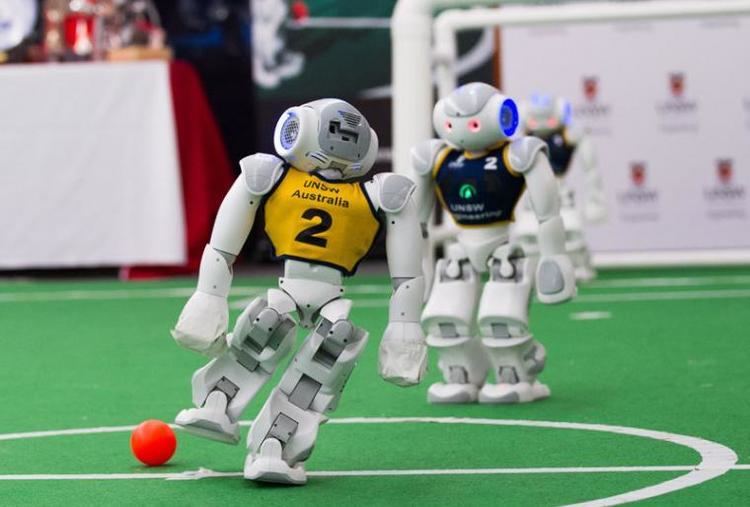
Many competitions are for schools (as they are an effective medium in which to learn) but several professional competitions are arising.
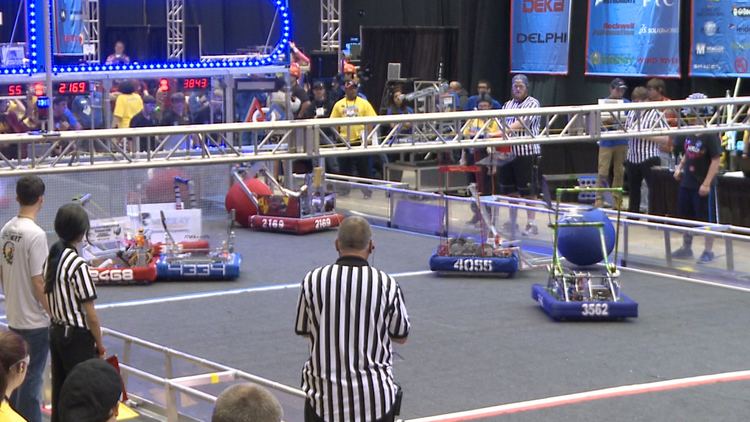
The following examples describe a few of the higher profile events.
Roborace
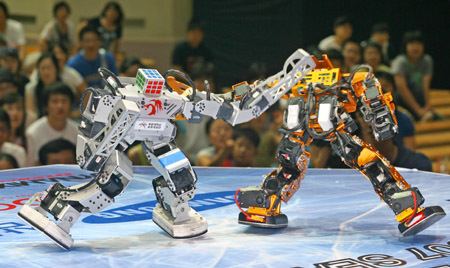
Roborace will be a global motorsport championship with autonomously driving, electrically powered vehicles. The series will be run as a support series during the Formula E championship for electric vehicles. This will be the first global championship for driverless cars.
DARPA Grand Challenge
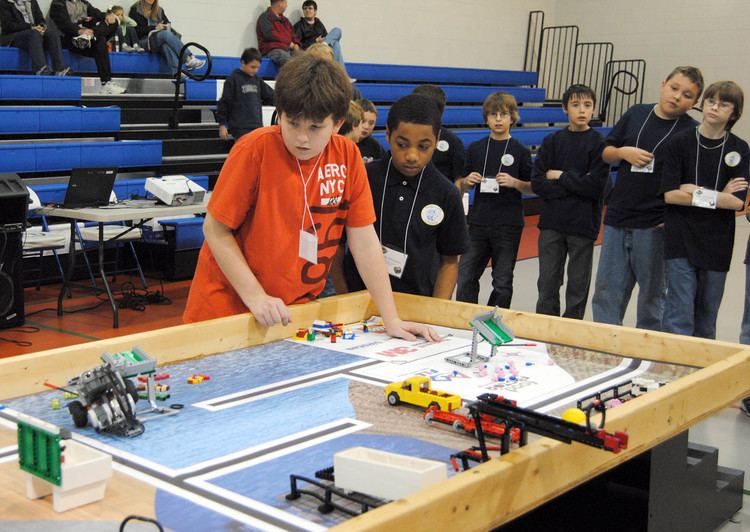
The DARPA Grand Challenge was a rally style race for driverless cars. The unclaimed 2004 prize for navigating through the Mojave Desert was $1,000,000. The farthest any participant got was only 7.4 miles. However, the 2005 prize of $2,000,000 was claimed by Stanford University. In this race, five autonomous vehicles crossed the finish line.
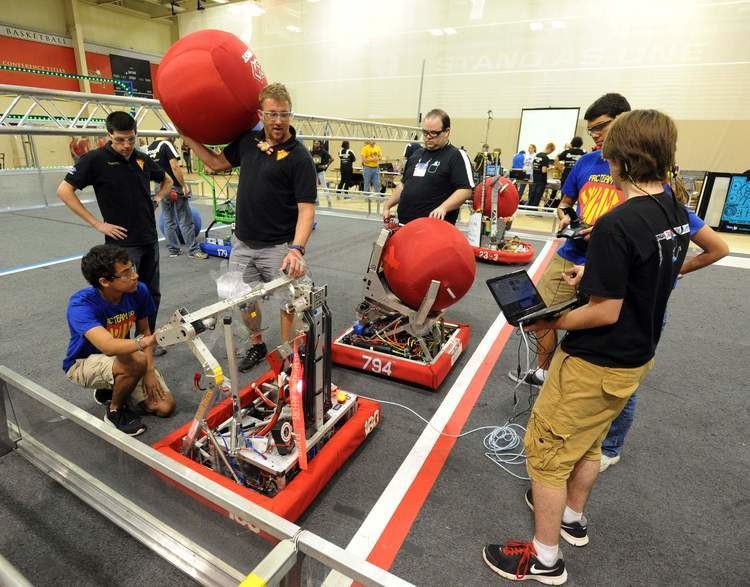
The 2007 competition pitted the vehicles against a mock-urban course with live traffic obstacles. Six vehicles crossed the finish line. Cash prizes were $2,000,000 for first place, $1,000,000 for second place, and $500,000 for third place. DARPA believes that autonomous vehicle technology will continue to rapidly develop without further contests so the race series has ended.
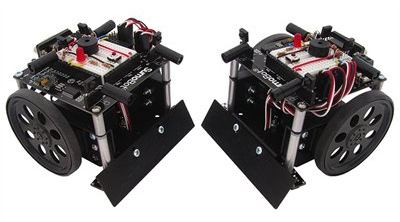
The race was to help develop technology required by the US Congress to be installed on US military land combat vehicles "as soon as possible and before 2015." Accomplishing the conversion of one third of the US Army's one million vehicles to driverless operation still represents a significant challenge. Other branches of the US armed forces have similar numbers of land vehicles to convert. Congress has also set deadlines for air and sea vehicle conversions.
The social benefit of preventing traffic fatalities by applying DARPA Grand Challenge robotics to land transportation is significant. Military use of this technology is unofficially estimated at being able to save one soldiers life a day. Civilian use of this technology in cars, busses, and trucks is estimated by the US Department of Transportation as being able to save 166 lives a day on US roadways.
AUVSI Foundation's Intelligent Ground Vehicle Competition (IGVC)
Held annually since 1992, The IGVC challenges college student teams to develop an autonomous ground vehicle that must navigate an obstacle course, complete with a list of mobility and design requirements. Partnerships between students and industry leaders enable the competition to serve as an educational experience.
European Land Robot Trial
The European Land-Robot Trial is a demonstration of the abilities of modern robotics. It is directed towards security and defence robots and aimed at European participants from both academic and commercial backgrounds. It is held annually, alternating between a civilian and a military version in places around Europe.
From 2013 till 2015, instead of the civilian European Land-Robot Trial the newly created EURATHLON trial will take place, a robot competition supported by the European Commission in the Seventh Framework Programme (FP7).
OFF Road Robotics Competition
The competition is organized by the Robot Association of Finland.
The goal is to build a robot which is able to move without human help off road. The competition is held annually at the mid-summer Jämi Fly In air show in Finland. The competition track is randomly selected 10 minutes before competition by the judge, marked with four wooden sticks to make a 200-meter track. The track consists of sand roads and fields containing bushes and rocks. The robots must run outside the sticks from start to finish without human assistance as fast as possible. YouTube movies and pictures from the 2007 and 2008 competitions are available.
Centennial Challenges
The Centennial Challenges are NASA prize contests for non-government funded technological achievements, including robotics, by US citizens.
The Sample Return Robot Challenge, as part of NASA's Centennial Challenges program, offered a total $1.5 million to teams that can build fully autonomous robots that can find, retrieve, and return up to 10 different types of samples within a large outdoor environment (80,000 m2) in two hours. The challenge started in 2012 and ended in 2016. Over 50 teams competed during the 5-year history of the NASA Challenge. A robot named Cataglyphis, developed by Team Mountaineers from West Virginia University completed the final Sample Return Robot Challenge in 2016.
International Autonomous Robot Racing Challenge (IARRC) 2010
Student teams from around the world compete in an outdoor racing competition, where small-scale robots race against other robots to the finish line, without any human guidance or control. Their skills are put to test in a static judging event, a drag race and a circuit race event, where the vehicles navigate around obstacles and obey the traffic rules. These robots are finding their way in applications such as space exploration, mining, search and rescue, remote sensing and automotive inspection.
Robot Racing is an effort to promote research in autonomous mobile robotics technology. The competition provides students with engineering design challenges, including components of mechanical, computer, control software, and system integration. Students work together to design and build robotic vehicles that can navigate twisting, obstacle-filled courses without any human guidance or control.
Autonomous Ground Vehicle Competition (AGVC)
Student teams from Australian universities compete in a competition involving an autonomous navigation challenge around an obstacle course, design presentations and technical report writing. It is an annual event hosted by Deakin University, and is sponsored by the Defence Science and Technology Organisation intended to stimulate robotics related research.
FIRST
FIRST (For Inspiration and Recognition of Science and Technology)
FIRST was founded in 1989 by inventor Dean Kamen to inspire young people's interest and participation in science and technology. FIRST is a 501(c)(3) not-for-profit organization devoted to helping young people discover and develop a passion for science, engineering, technology, and math. The annual programs culminate in an international robotics competition and celebration.
Junior FIRST LEGO League (Jr.FLL), ages 6–9
The Jr.FLL program features a real-world scientific concept to be explored through research, teamwork, construction, and imagination. Guided by adult Coaches, teams use LEGO®bricks to build a model that moves, and develop a Show-Me Poster to illustrate their journey.
FIRST LEGO League (FLL), ages 9–14
In FLL, children are immersed in real-world science and technology challenges. Teams design their own solution to a current scientific question or problem and build autonomous LEGO robots that perform a series of missions.
FIRST Tech Challenge (FTC), ages 14–18
FTC is designed for high-schoolers who want to compete head to head using a sports model. Teams of up to 10 students are responsible for designing, building, and programming their robots to compete on a 12 X 12’ field in an Alliance format against other teams. Robots are built using a TETRIX® platform that is reusable from year-to-year using a variety of languages. Teams, including Coaches, Mentors, and Volunteers, are required to develop strategy and build robots based on sound engineering principles. Awards are given for the competition as well as community outreach, design, and other real-world accomplishments.
FIRST Robotics Competition, ages 14–18
The first and highest-scale program developed through FIRST is the FIRST Robotics Competition (FRC), which is designed to inspire high school students to become engineers by giving them real world experience working with engineers to develop a robot. The competition challenge changes each year, and the teams can only reuse certain components from previous years. The robots weigh at most 120 pounds (54.4 kg), without batteries and bumpers. The kit issued to each team contains a base set of parts.
World Robot Olympiad (WRO)
The World Robot Olympiad is a global robotics competition for young people. The World Robot Olympiad competition utilizes Lego Mindstorms manufactured by LEGO Education. First held in 2004 in Singapore, it attracts 1000 participants from 32 countries.
The competition consists of the regular category where teams assemble robots that can solve a problem, and the open category where teams present designs for robots, based on a given theme. The contest is conducted in three different age groups: elementary, junior and senior.
RobotArt.org
This yearly online competition gives $100,000 in cash prizes to challenge teams to produce something visually beautiful with robotics – that is, to have a robot use physical brushes and paint to create an artwork. The competition is open to anyone regardless of age or affiliation and any type of robot can be used. Teams can enter up to 6 paintings in each of the competition categories of “original artwork” and “reinterpreted artwork” where a reference image or existing artwork is used as a reference.
RoboRAVE International
Teams (2 to 4 players) use any type of autonomous robots to compete in one or more of seven robot challenges: a-MAZE-ing, AlpineBot, Jousting, Line Following, Triathlon, Fire Fighting, Aerial, and Robotovate: The Entrepreneurial Challenge (robot + innovate). RoboRAVE International team divisions: Elementary School (Grades 3-5), Middle School (Grades 6-8), High School (Grades 9-12), and Big Kids (Beyond High School). Teams earn points both at and before the event: robot performance at the event and "before event points" for team engineering reports, video documentation, and corporate partnership letters. Started in 2001 by three New Mexico educators with 24 students and 12 robots, the 2015 event is expecting over 1500 students bringing over 500 robots from 9 countries (China, Colombia, Czech Republic, France, Japan, Mexico, Nigeria, US, and Zambia). RoboRAVE International is held annually on the 1st weekend of May in Albuquerque, New Mexico, US. For more information on RoboRAVE International events around the world, visit www.roborave.org.
RoboGames
Recognized by the Guinness Book of World Records as the "World's Largest Robot Competition", the RoboGames (formerly ROBOlympics) host over 70 events and are modeled on the human Olympics. Robot soccer, sumo, combat, android wrestling, maze solving, fire-fighting, biped races, balancer races, and exoskeletons are a few of the events held. Teams compete from around the world, and RoboGames is open to anyone regardless of age or affiliation.
BEST Robotics
BEST, Boosting Engineering, Science, and Technology, is a national 6-week robotics competition in the United States held each fall, designed to help interest middle school and high school students in engineering careers. BEST is the only robotics competition for students in this age group that requires no entry fees or kit costs for participation. BEST Robotics has added Regional and National Competitions to their programs with the first National Competition held in Dallas during 2010 in conjunction with the International VEX Robotics Competition.
International METU Robotics Days
The International METU Robotics Days event is hosted annually by the Middle East Technical University in Ankara, Turkey. The Robotics Days include eight categories of competition as well as lectures, seminars and workshops.
IEEE Micromouse competition
In Micromouse competitions, small robots solve a maze in the fastest time. The format involves the "mouse" finding its way to the centre of a 16x16 maze. The competitions have been held since 1979 and are conducted in countries around the world.
The VEX Robotics Competition
VEX Robotics, Inc. contracts the non-profit Robotics Education and Competition Foundation to organize and operate the worldwide VEX Robotics Competition. In the 2015-2016 season, there were 16,000 registered teams from 40 countries, competing in over 1,350 events. Teams build and program a robot, using the VEX Robotics Design System platform, to complete a task. VRC is played on a 12'x12' square field. Two alliances – one "red" and one "blue" – composed of two teams each, compete in each match which consists of a fifteen-second autonomous period followed by two minutes of driver-controlled play. The object of the game is to attain a higher score than the opponent alliance by accruing points according to the game elements laid out in that year's rules.
RoboCup
The RoboCup Federation uses RoboCup competitions as a vehicle to promote robotics and AI research. The goal of the RoboCup Initiative is that, by mid-21st century, a team of autonomous humanoid robot soccer players win a soccer game, complying with the rules of FIFA, against the winner of the most recent World Cup.
There are four league categories:
RoboCupSoccer - The main focus of the RoboCup competitions is the game of football/soccer, where the research goals concern cooperative multi-robot and multi-agent systems in adversarial environments. All robots in the league are autonomous. There are five leagues in RoboCupSoccer:
RoboCupRescue - The intention of the RoboCupRescue project is to promote research and development involving teamwork, physical robotic agents for search and rescue, information infrastructures, personal digital assistants, a standard simulator and decision support systems, evaluation benchmarks for rescue strategies and robotic systems. There are two leagues in RoboCupRescue:
RoboCup@Home - The RoboCup@Home league aims to develop service and assistive robot technology with relevance for domestic applications. It is the largest international annual competition for autonomous service robots and is part of the RoboCup initiative. A set of benchmark tests is used to evaluate the robots’ abilities and performance.
RoboCupJunior - RoboCupJunior is a project-oriented educational initiative that sponsors local, regional and international robotic events for young students. It is designed to introduce RoboCup to primary and secondary school children, as well as undergraduates who do not have the resources to get involved in the senior leagues yet. The focus of the Junior league lies on education. There are three leagues in RoboCupJunior:
SAURO
Sakarya University Robotics Competition(SAURO) is a robotics competition hosted by Sakarya University since 2009. The organization is open to undergraduates, graduates and high school students. www.saurobot.org
Botball Educational Robotics
Botball is a robotics competition for middle and high school students. Organized by the KISS Institute for Practical Robotics, Botball encourages participants to work within their team building communication, problem solving, design, and programming skills. Each team builds one or more (up to four) robots that will autonomously move scoring objects into scoring positions.
Mobile Autonomous Systems Laboratory competition (Maslab)
The Mobile Autonomous Systems Laboratory, or Maslab, is a university-level vision-based autonomous robotics competition. The competition is open to students of the Massachusetts Institute of Technology (MIT) and requires multithreaded applications of image processing, robotic movements, and target ball deposition. The robots are run with Ubuntu Linux and run on an independent OrcBoard platform that facilitates sensor-hardware additions and recognition.
Annual fire-fighting home robot contest
Trinity College (Connecticut) has an annual firefighting robot contest which is participated in by high schools and colleges from around the world. This is the largest, public robotics competition held in the U.S. that is open to entrants of any age, ability or experience from anywhere in the world [8]. One new event in the concept division was added to the 2007 competition, which is the baby-finding contest. Participants have to find both the flame and the simulated baby, extinguish the flame and announce when it finds the latter in the expert division. In the concept division, simply finding the baby and notifying the people is sufficient.
Duke Annual Robo-Climb Competition (DARC)
Hosted by Duke University, the Duke Annual Robo-Climb Competition (DARC) challenges students to create wall-climbing robots that can ascend vertical surfaces. The competition, which will be held on Duke's campus in Durham, North Carolina, will allow students to showcase their wall-climbing technology.
AAAI Grand Challenges
The two AAAI Grand Challenges focus on human robot interaction, with one being a robot attending and delivering a conference talk, the other being operator-interaction challenges in rescue robotics.
ITURO
Istanbul Technical University Robot Olympics (abbreviated as ITURO) is a robotics competition that has been hosted by Istanbul Technical University since 2007. The organization is open to undergraduates, graduates and high school students. ITURO is a 3-day organization arranged every spring. Almost 1000 competitors and more than 10000 visitors are hosted every year.
ITURO has eleven competition categories, such as line tracking robots, self-balancing robots, color selecting, Basketball and innovative category.
Robofest
Robofest is an annual robotics competition originated at Lawrence Technological University in 2000 for students in grades 5 to 12. Robofest challenges student teams, to design, build, and program fully autonomous robots. The competition categories in junior and senior age divisions in Robofest are games, creative exhibitions, pentathlon, sumo, and fashion show. The Robofest name is also used by several other organizations worldwide.
Collegiate Robofest
The Collegiate Robofest is organized by Lawrence Technological University and is open to professionals, hobbyists, college students and advanced high school students. The competition category is the "Mini Urban Challenge" using a PC-based robot with a camera called L2Bot.
International Robot Olympiad (IRO)
Robot game for children ages 9 – 18. For the standard category, children build robots from scratch and solve a problem within 2–3 hours. In the creative category children bring their design, reports, and research and show it - exhibition style. The committee are experts from universities around the world. IRO 2015 held at Bucheon, Korea from 15 to 20 December. Official website for IROC Official website for IRO 2015
Rat's Life robot programming contest
This contest is organized to promote research results and stimulate interest in bio-inspired robotics control. The participation to the contest is open to anyone and free of charge. Contestants can download a free version of the Webots software for simulating a robotic scenario where two rat robots compete for survival in a maze-like environment. The developed robot controllers can be transferred in real e-puck robots roaming an interactive LEGO maze. The competition is widely used for teaching.
ABU RoboCon
An annual robot contest which started in 2002 for university, college and polytechnic students in the Asia-Pacific region. Participants compete with their peers from other countries with hand-made robots. The event broadcasts in countries/region through ABU member broadcasters.
The contest is hosted by a different broadcaster/country every year.
Defcon Robot Contest (DefconBots)
The DEF CON, world's largest hacker convention hosts a robotic competition called DefconBots. From 2006 to 2008 the goal was to build an autonomous stationary robot to shoot down the targets. Previous competitions included line following and transporting ping-pong balls across the arena. The contest is open to everyone.
Eurobot
Eurobot is an international robot contest. The teams must build autonomous robots, that collect elements on a given playing area with new rules every year.
The final round is hosted by different countries every year. The best three teams from every country may take part in the international final.
UBBOTS competition
UBBOTS is an annual robot exhibition taking place at Babes-Bolyai University, Cluj-Napoca, Romania. The teams have to create a robot that helps humans and simplify their life.
National Engineering Robotics Contest
Every year, hundreds of robots from institutions Pakistan-wide gather at the College of Electrical and Mechanical Engineering, NUST Islamabad,Pakistan to participate in the National Engineering Robotics Contest (NERC). Over 155 teams participated in NERC 2010. Contestants have to fabricate their robot from the scratch according to the theme provided.
Student Robotics
Student Robotics is an annual robotics competition for 16- to 18-year-olds that has run since 2007. It has its roots at the University of Southampton, and has recently spread to Bristol University and Grenoble INP. The competition is run by volunteers, who use funding from sponsors to provide teams with a kit, as well as run the competition.
Pioneers in Engineering
Pioneers in Engineering (PiE) is a student-run organization that promotes the study of science, technology, engineering, and mathematics, collectively known as STEM fields. The organization was established in 2008 as a non-profit corporation by University of California, Berkeley student, Xiao-Yu Fu. The University provides training and mentorship opportunities for local high school students to improve their technological skills, by participating in a robotics competition, during which each student designs and builds functional robots. Since 2008, over 20 schools have participated in the program.
FIRA RoboWorld Cup
Federation of International RobotSoccer Association FIRA robot soccer, a brainchild of Prof. Jong-Hwan Kim, KAIST, began in 1995 and the first international championship was held at KAIST, Daejeon, Korea in 1996. And Federation of International Robot-soccer Association (or FIRA, in short) was officially founded in June 1997. FIRA has a basic goal of taking the spirit of science and technology of robotics to the laymen and the younger generation, through the game of robot soccer. Robot soccer can be portrayed as a competition of advanced robot technology within a confined space. It offers a challenging arena to the young generation and researchers working with autonomous mobile robotic systems.
First Robot Olympics
The first Robot Olympics took place in Glasgow Scotland on September 27–28, 1990. The event was run by The Turing Institute at the Sports Centre at the University of Strathclyde. It featured 68 robots competing in a range of sporting events from. The robots were from 12 different countries and involved over 2,500 visitors over the two-day period.
STEAMCUP Online Competition
STEAMCUP is both an online and offline competition organized by a non-profit organization called STEAM. The offline is currently held only in Korea, and the online is open to all global robot owners. The objective of the online competition is to have children use their imagination and build creative robots and present them. This not only helps build stimulate their brain and creativity but also their presentation and planning skills. Students from over 10 countries are participating worldwide.
AUVSI Foundation and ONR's RoboSub Competition
Launched in 1997 and co-sponsored by the Office of Naval Research (ONR), the goal of this competition is to advance the development of Autonomous Underwater Vehicles (AUVs). The event serves to foster ties between young engineers and the organizations developing AUV technologies. Open to high school and college teams.
Marine Advanced Technology Education Center Competition
The Marine Advanced Technology Education (MATE) Center sponsors an annual international remotely operated vehicle (ROV) competition in partnership with the Marine Technology Society's ROV Committee. First held in 2002, the competition is open to middle school (grades 5-8), high school (grades 9-12), community and technical college, and four-year university students as well as home-schooled students of comparable grade levels. The competition’s class structure of beginner, beginner/intermediate, intermediate, and advanced provides students with the opportunity to build upon their skills, and the application of those skills, as they engineer increasingly more complex ROVs for increasingly more complex mission tasks.
The MATE ROV competition requires students to think of themselves as “entrepreneurs” and transform their teams into companies that manufacture, market, and sell ROV “products.” In addition to engineering their ROVs, the students are required to prepare technical reports, poster displays, and engineering presentations that are delivered to working professionals who serve as competition judges. The MATE Center sponsors 20+ regional competitions, held around the world, throughout the academic year. In June, the top teams attend the MATE International Student ROV Competition, which is held in a different location each year. The competition theme changes according to the location. Previous themes have included ocean observing systems, World War II shipwrecks, science under the ice, submarine rescue, and underwater volcanoes.
Student Autonomous Underwater Challenge-Europe (SAUC-E)
Held since 2006, SAUC-E challenges the next generation of engineers to design and build an autonomous underwater vehicle (AUV) capable of performing realistic missions. The event is designed to encourage students to think about underwater technology and related applications while fostering innovation and technology. It also aims at getting young engineers and scientists to consider careers in the field. Participating teams must consist of 75% student members and have a faculty advisor. From 2010 SAUC-E has been held in La Spezia (Italy) at NATO Undersea Research Centre (NURC), now Centre for Maritime Research and Experimentation (CMRE). After the success of the four first editions, competitors had once again in 2014 the possibility to deal with real life conditions (i.e. limited visibility and salty water) since the competition will be held for the fourth time outside at the CMRE waterfront, which is a sheltered harbor. From 2013, teams have been encouraged to use collaborative multi-robot strategies with the underwater vehicle cooperating with a support surface/underwater vehicle.
AUVSI Foundation and ONR's RoboBoat Competition
Launched in 2008 under the name of "AUVSI Foundation and ONR's International Autonomous Surface Vehicle (ASV) Competition", RoboBoat is a student competition based around unmanned boats operating under rules of the waterway. This includes littoral area navigation, channel following and autonomous docking. This is done with computer vision, multi-sensor fusion techniques, proactive and reactive path planning, and machine learning approaches using embedded systems within the vehicle. Open to high school and college teams.
Maritime RobotX Challenge
Launched in 2014, the Maritime RobotX Challenge is a biennial international competition based around complex maritime tasks where all teams must use the same base platform. The platform is a 16 ft Wave Adaptive Modular Vessel. Competition entry is restricted to 3 teams per competing country (2014: Australia, Japan, Singapore, South Korea and United States of America)
AUVSI Foundation's International Aerial Robotics Competition (IARC)
The AUVSI Foundation's International Aerial Robotics Competition is the longest running aerial robotic event, held annually since 1991. The competition is open to universities and has had missions involving ground object capture and transfer, hazardous waste location and identification, disaster scene search and rescue, and remote surveillance of building interiors by fully autonomous robots launched from 3 km. In 2008 an $80,000 prize was awarded. Typically a prize of $10,000 is offered, and increases by $10,000 for every year that the competition challenge goes uncompleted. The IARC has been held at venues around the world (e.g., Walt Disney World's EPCOT Center, U.S. Department of Energy facilities, the Canada Olympic Village, Ft. Benning Georgia, Mayaquez Puerto Rico), but a second concurrent venue was established in Beijing China beginning in 2012. This "Asia/Pacific Venue" serves the Asian and Australian continents while the "American Venue" serves the American, European, and African continents. Teams are free to enter the competition at either venue. Since August 2012, the two venues have been operating under the same mission parameters simultaneously on an annual basis. The fundamental element common to all IARC missions if fully autonomous flight. During the quarter century anniversary of the IARC in 2016, the 7th mission will be under way, involving interaction between fully autonomous pre-programmed wandering ground vehicles and a fully autonomous intelligent aerial robot which will attempt to herd the ground vehicles over one edge boundary of a 20m x 20m arena by coming into physical contact with the ground vehicles.
AUVSI Foundation's Student Unmanned Air System (SUAS) Competition
The SUAS Competition, aimed at stimulating and fostering interest in unmanned air systems, technologies and careers, requires the design, integration and demonstration of a system capable of conducting air operations to include autonomous flight, navigation of a specified course and use of onboard payload sensors. Additionally, students are required to submit technical journal papers and make oral presentations.
UAV Outback Challenge
The UAV Outback Challenge has been running since 2007. There are multiple events for different competitor levels. The open category competition is an autonomous search and rescue mission with a large target area and tens of kilometers of required flight range. It is an annual event that is held in Australia and is organized by CSIRO and Queensland University of Technology (Australian Research Centre for Aerospace Automation). A team from Australia, called CanberraUAV, won the Search and Rescue mission in 2014, and were awarded the $50,000 grand prize and the Rod Walker Trophy. This was the first time that this prize had been awarded since the event began in 2007. The events are open to all, and there are no restrictions requiring student participation. The event hence became popular with hobby teams and open source autopliot developers, making it one of the most significant unmanned aerial robot competitions in the world.
Micro Air Vehicle Events
A series of micro air vehicle (MAV) events have been sponsored by organizations including the University of Florida, the U.S. Army, French DGA, Indian Ministry of Defense, and others. For example, the International Micro Air Vehicle conferences (IMAVs) always includes competitions in which capabilities are demonstrated and missions are performed. The goal of most competitions is to stimulate research on full autonomy of the micro air vehicles. Prizes range up to an aggregate value of $600,000 in 2008.
Flying Donkey Challenge
The Flying Donkey Challenge is an escalating series of sub-challenges held annually in Africa with a focus on lifting cargo. The initial challenge is scheduled to take place in Kenya in November 2014 with 4 enabling technology and design sub-challenges and 3 non-technical challenges.
